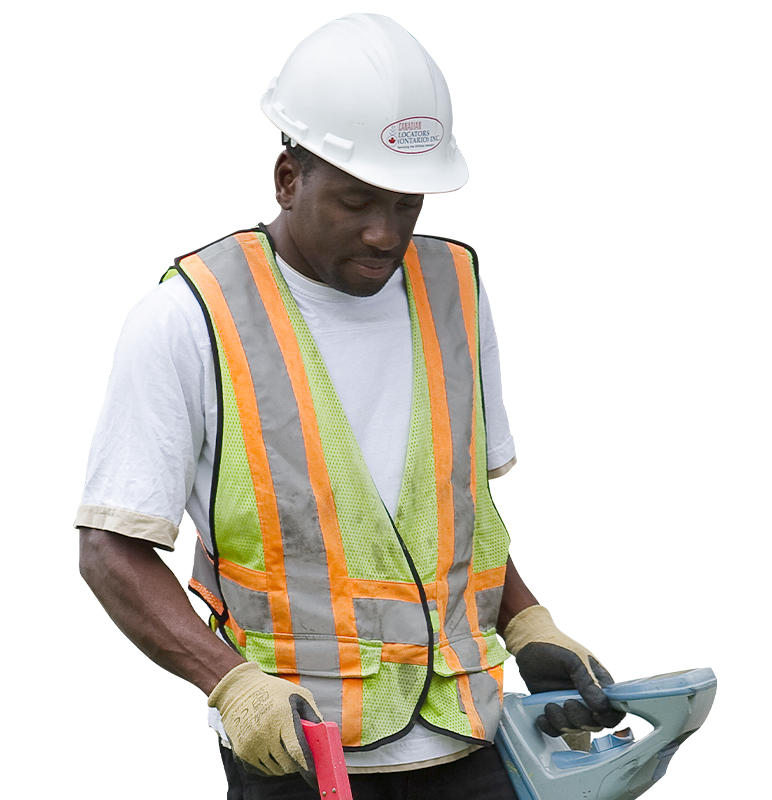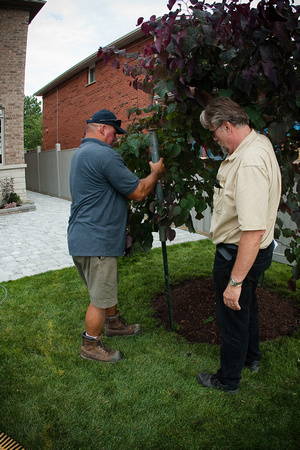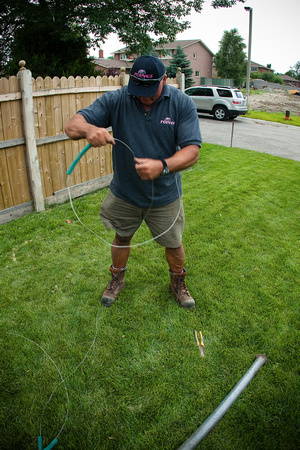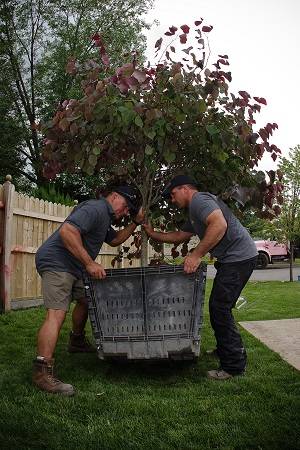Root Rescue’s Transplanter contains millions of natural-sourced beneficial fungi called mycorrhizae
> Virtually eliminate the replacement cost of failed transplants
> Increase crop success, reduce your dependence on inefficient synthetic fertilizers
> Plants gain permanent access to water and nutrients that the roots alone cannot find
> Establish healthier and more durable landscape plants

Contractor Sizes
Let customers speak for us
Hello and thank you for using Root Rescue Transplanter
"The all-natural plant starter – for life"
Safe and easy to use, Transplanter is recommended whenever you plant new trees, shrubs, evergreens, or perennials. The formulation is highly concentrated – water is used to both dilute the product and carry its active ingredients into the root zone. The 450 gram tub will create 750 Litres (200 Gallons) of solution – enough to treat 20 60mm caliper trees, or 400 1 gallon perennials.
There are several ways to apply Transplanter:
- Mix 1 teaspoon of powder into a 2 gallon watering can
- Or, mix 1 tablespoon of powder into a 5 gallon pail
- Motorized tank mixer application equipment can also be used to apply the solution. Use the high-volume low-pressure setting for applying the solution as a drench – or use the high-pressure low-volume setting to inject the solution into the ground with a Root Feeder Probe. For more information about using this type of equipment, click the link in the menu below.
- Because Transplanter mixes easily in water you can also use a hose-end, dial type applicator to apply the solution. This is a very quick and efficient way to apply Transplanter.
For step-by-step instructions click here.
For more information on Root Rescue Transplanter, including a list of Mycorrhizal Partnerships by Plant, our Dosage + Cost Calculator, and much more, check out our Free Technical Support Documents section.
Highway of Heroes Tree Planting Tribute
Simply apply the Transplanter solution to the roots of plants once they are placed in the planting hole - and then tamp-in and thoroughly saturate each layer of back-fill as you complete the planting process. In brief, instead of using plain water when you plant, simply use the Root Rescue Transplanter solution.
Because Transplanter is mixed in water, it can also be applied after planting. Mix the solution and slowly drench the ground around the plant, or use root feed injector equipment to deliver the solution directly into the active root zone. (When using this type of equipment, keep the maximum pump pressure below 200 psi.)
Root Rescue’s Transplanter contains millions of natural-sourced beneficial fungi called mycorrhizae. These amazing organisms enter into a mutually beneficial symbiosis with the roots. As a result, the plant gains permanent access to soil water and nutrients that the roots alone cannot find. This (along with the benefits of the biostimulants in the formulation) helps to offset transplant shock, and reduce plant stress. These benefits will help treated plants to succeed in the critical first weeks and months on the new planting site; reducing transplant losses and establishing, healthier and more durable landscape plants for your clients. And the benefits of mycorrhizal symbiosis will continue to help the treated plants to succeed and thrive in the years ahead.
After planting day, Root Rescue highly recommends that you use organic products to feed and care for the landscape plants you’ve treated. Transplanter is step 1 in a comprehensive organic landscape program for your clients. Step 2 should be to use only organic products going forward:
- Organic Fertilizers
- Compost or Compost Tea
- Natural Source Rock Mineral Supplements
- It is not recommended that Bone Meal be used with Transplanter
- As always, use mulch to control weeds and build organic matter in soils
If you’d like to use a synthetic fertilizer, you can – but only use Slow Release formulations with plants treated with Transplanter.
Thanks again for using Root Rescue.











